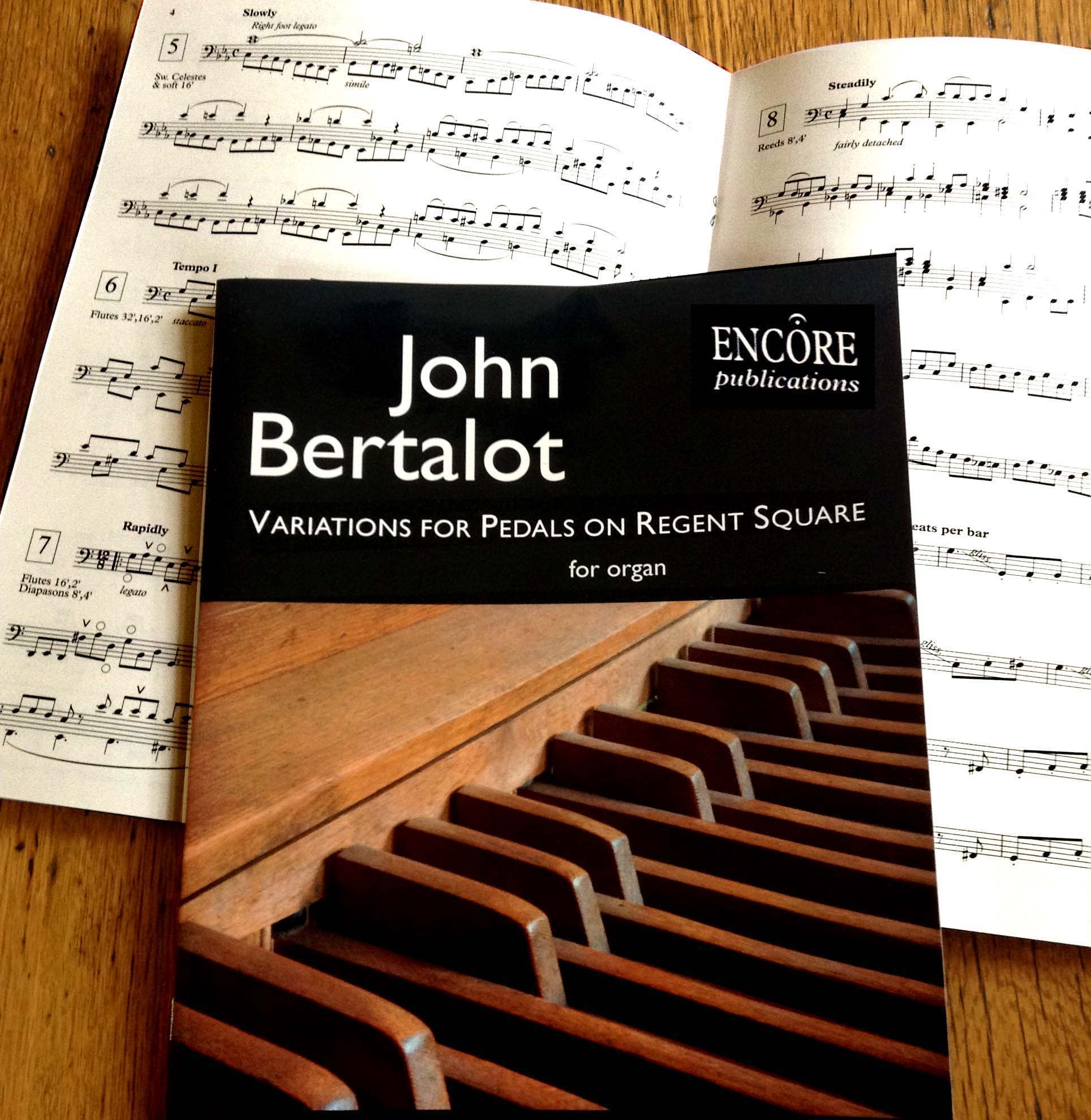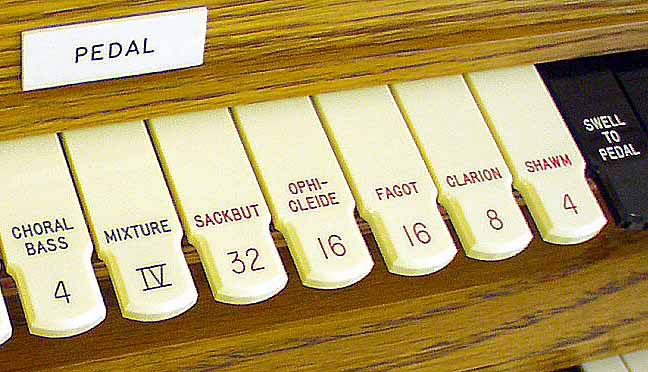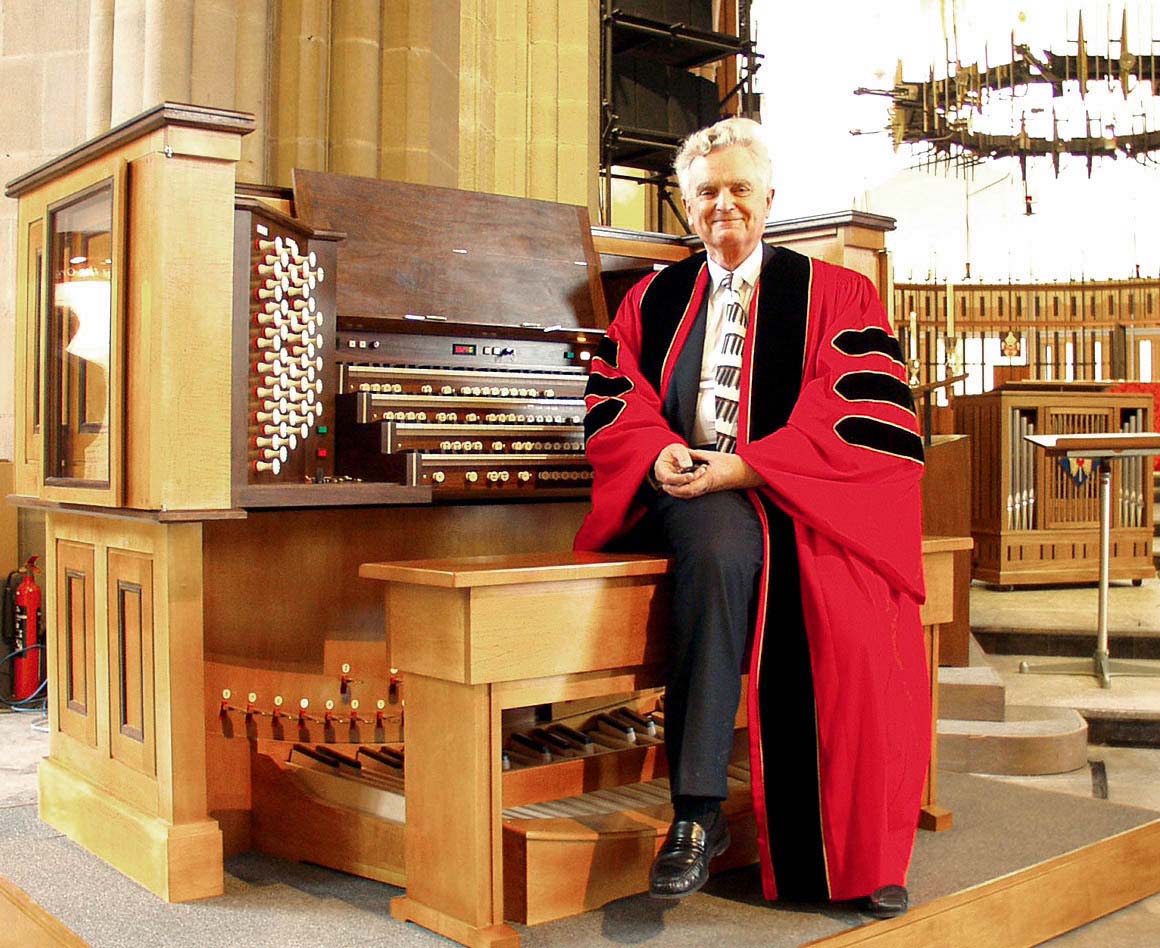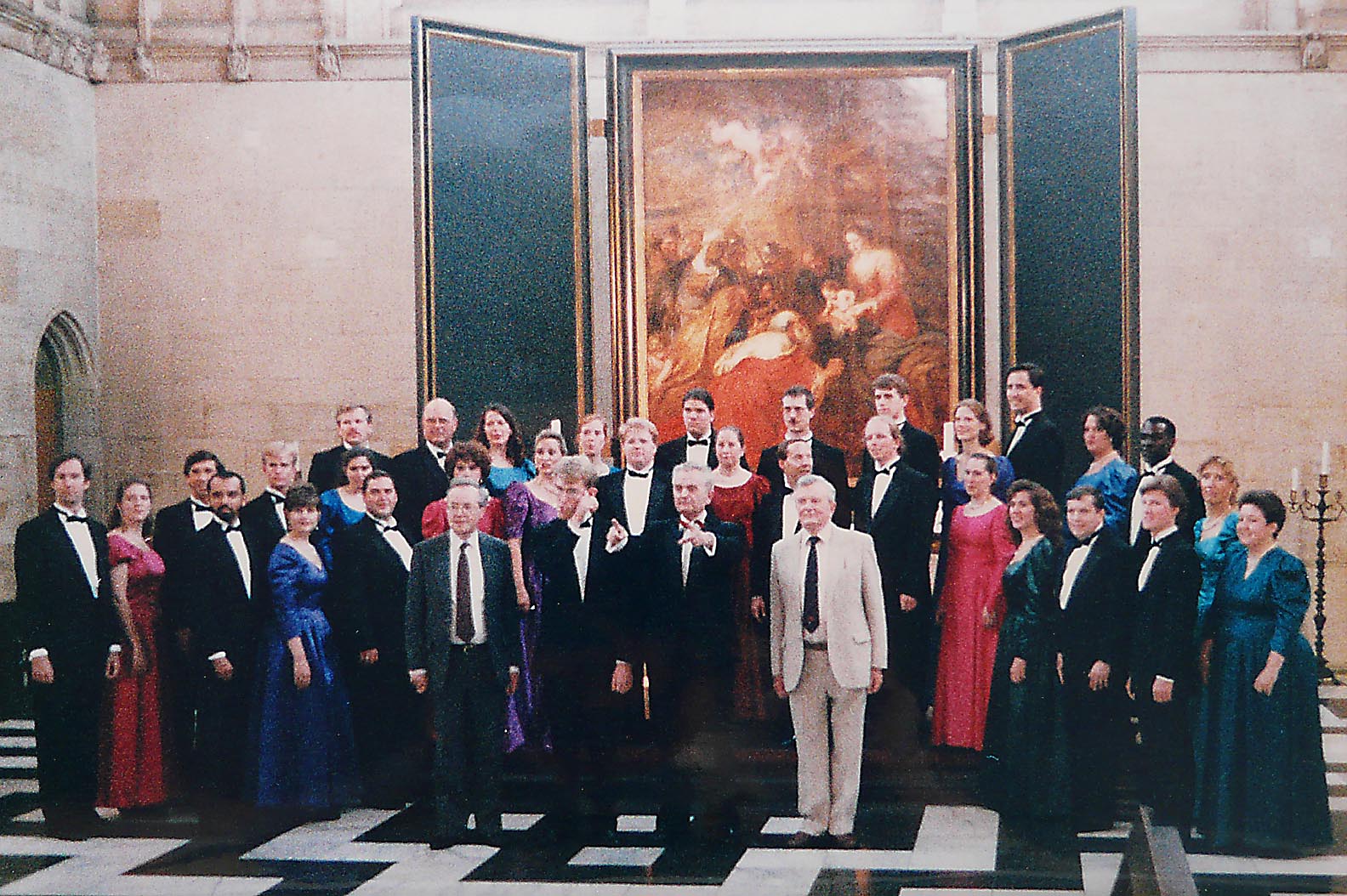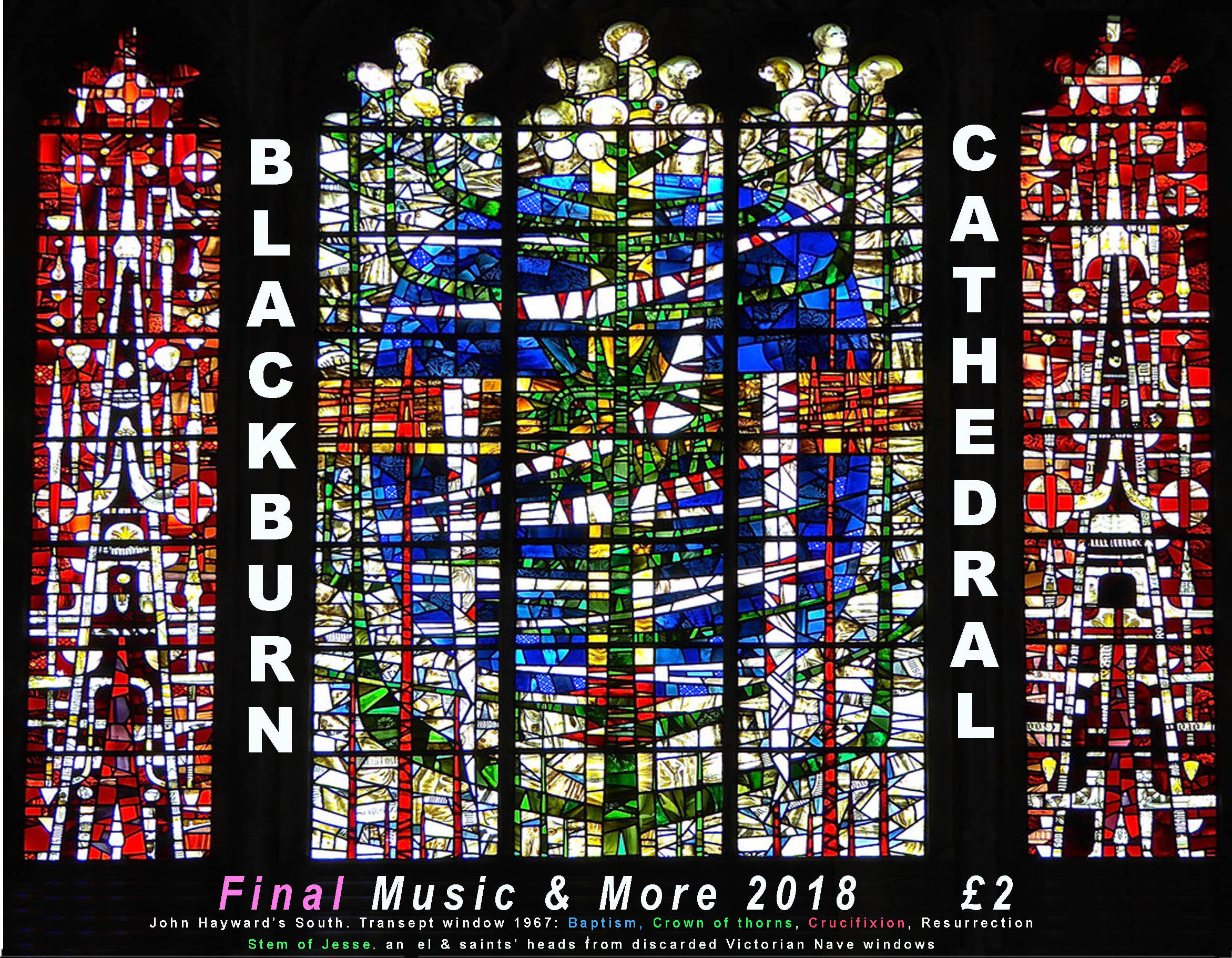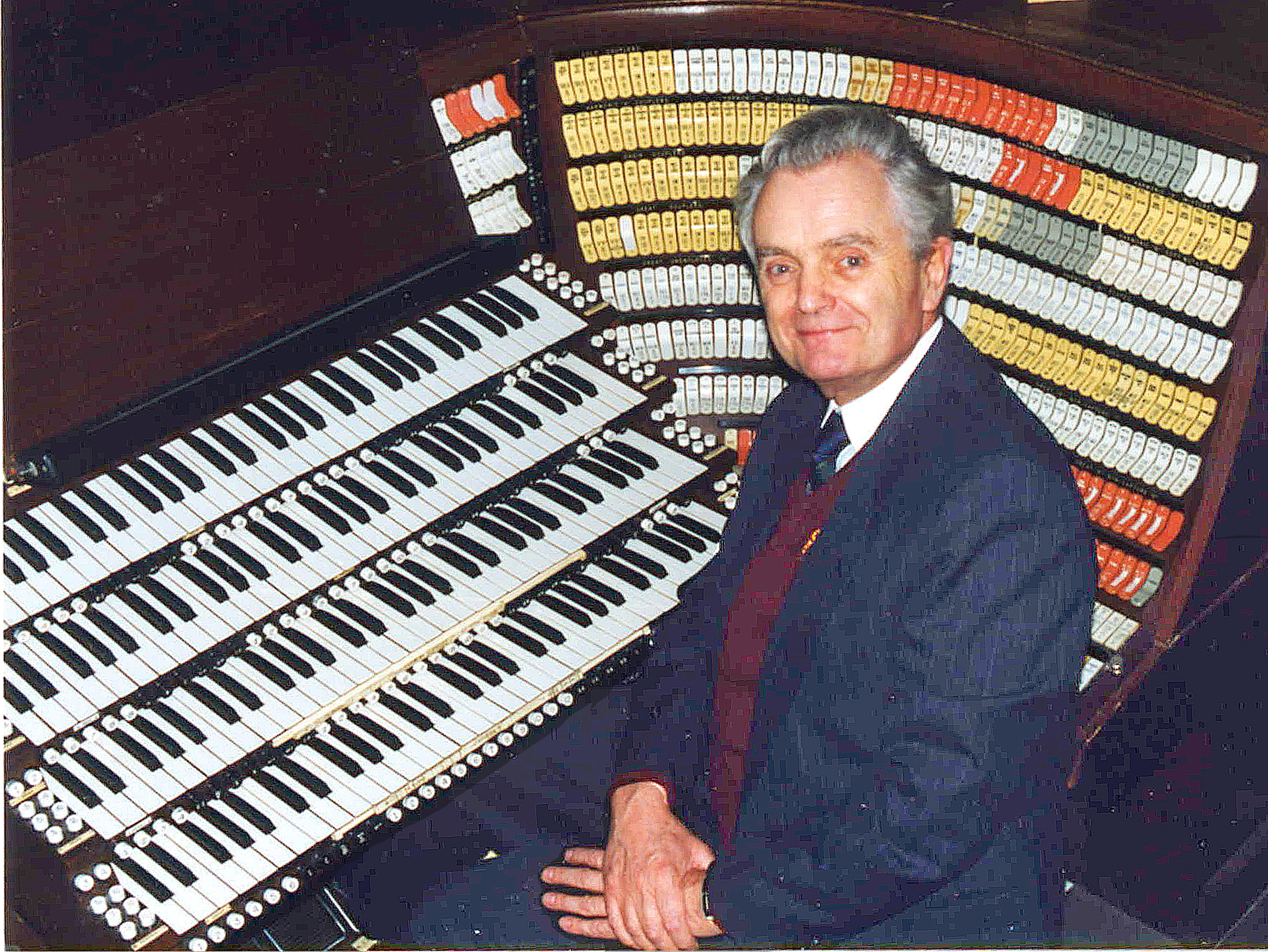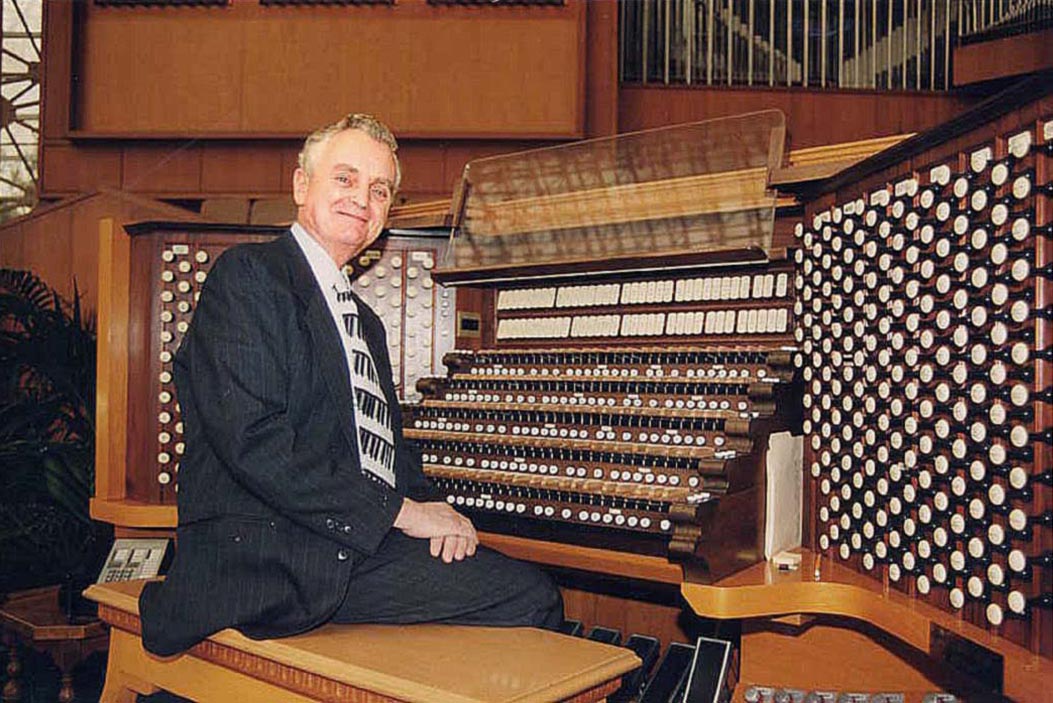How to transform your choir
and fill your stalls
with enthusiastic singers
12 THE TWO GREATEST COMMANDMENTS!
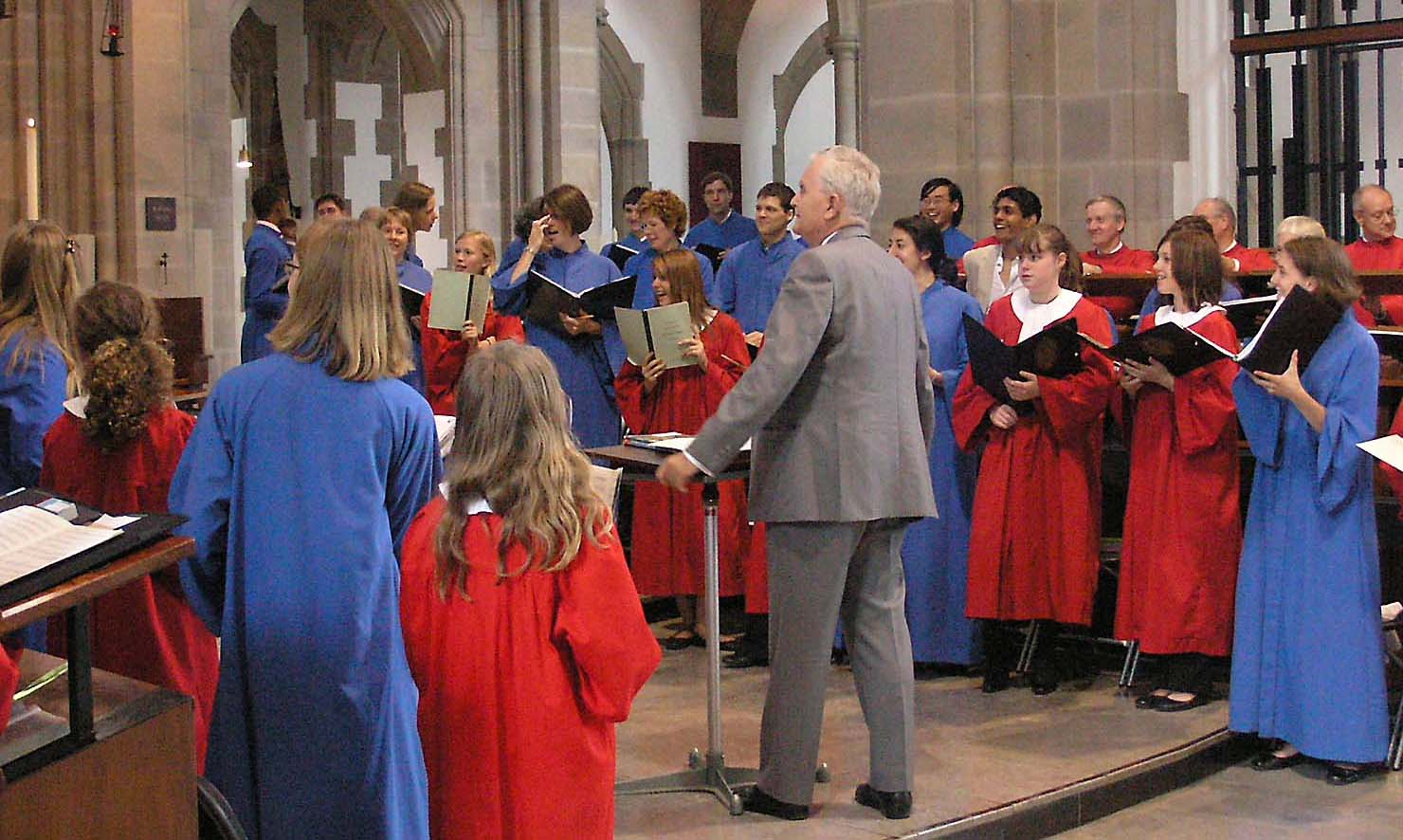
by Dr John Bertalot
Organist Emeritus, St. Matthew's Church, Northampton
Cathedral Organist Emeritus, Blackburn Cathedral
Director of Music Emeritus, Trinity Episcopal Church, Princeton, NJ, USA
THE TWO GREATEST COMMANDMENTS
If I were asked to be rash enough to define the two greatest commandments for training a choir I would say,
(i) Start together, and
(ii) Mean what you sing.
On these two commandments hang everything one does with one’s choir.
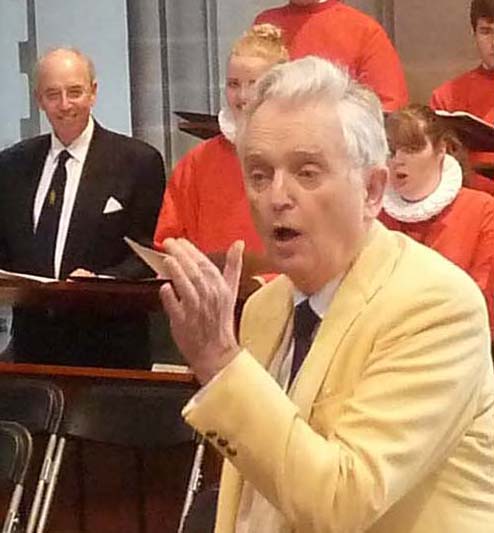
Last summer I enjoyed the privilege of taking an American church choir for a rehearsal. They were on a singing tour of the UK and were a fine choir, but as soon as I began to rehearse them I found that they didn’t start together. Why?
Were they sure of the first note?
“Sing that first chord for me!” They sang it tentatively.
“Sing it as though you enjoy singing!” The second attempt was better.
“Sing it as though you’ve flown across the Atlantic especially to sing that one note!” It was better still.
(That’s a great secret for success in choirtraining: always ask your choir to sing a note or a passage three times before you are satisfied.)

I’ve noticed that many choirmasters don’t insist that their choirs sing the very first chord wholly accurately or wholly together. If they can’t sing the first note really well how can they sing the rest of them correctly? (It can be compared to runners at the start of a race; they have to be exactly on their marks before the race begins otherwise it‘s a false start.) Once this choir had sung their first note firmly and really together they were in the right frame of mind to continue.

The same problem occurred when they were singing an anthem.
“Basses: you need to sing that entry more confidently!” Their second attempt was a little better but I knew that they could do it better still.
(That’s another secret of choirtraining: get your singers to sing better than they think they can by encouraging them to sing more courageously!)
“Basses, I still can’t hear you. Try that entry again! One, two, ready, breathe!” No for I knew that they could do it even better.
“Basses, how masculine can you sound when you sing that entry? … My word, ladies, didn’t that thrill you?”
But there was still something missing in their singing. “What are you singing about?” No answer, so I asked them to read the words out loud. Once they realized what the message of the anthem was, their new understanding began to show by the way they sang it. The essential element of interpretation also began to appear.

When you look at professional singers it’s clear that they are immersed in the meaning of the song they are singing. Actors on the stage also believe in every word they declaim across the footlights. It should be the same for the singers in our choirs:
unless they understand the words and believe them, how can they begin to interpret the anthem?
How often do we ask our singers during a rehearsal what the anthem is about? If they don’t know, then the message of the anthem won’t be communicated to the congregation, however expressively they may sing the notes.
A similar situation arose when this choir rehearsed Psalm 67. ‘God be merciful to us and bless us.’ I was aware that the essential message of the words wasn’t coming through for they sang mechanically, trying hard to fit the right words to the right notes. “Choir: if I may say so, it sounds as though you are trying to fit the pieces of a jigsaw puzzle together, but I can’t see the picture; it’s on the other side.”
And so I asked them to sing the first word: ‘God’. They sang it, but it didn’t mean anything.
“Choir: sing the word God as though you believed in Him!”
“No, that you really believed in Him!”
“Yes – but convert the congregation by the way you sing that very first word!” (They began to realize what I was trying to get them to do.)
“Now sing that first verse . . . what are the next two important words? Yes: merciful and bless. Sing that verse bringing out the meaning of those two words.” ‘GOD be merciful to us and bless us.’ Not only was the meaning of the words beginning to come through, but they were automatically singing musically instead of mechanically.
“Now sing the whole of the first verse: ‘… and show us the light of his countenance …”
“No. Say the word light.” (They mumbled it.)
“Say it in a dark way!” (It’s often helpful to get a choir to do something wrong on purpose, for they will then find it much more rewarding to do it right.)
“Now say it in a blindingly brilliant way: LIGHT!” And then they sang it, and their singing began to have meaning as well as accuracy.
I spent a lot of time getting that first verse right, for once they had begun to sing confidently they were more inclined to continue confidently.
Afterwards many singers came up to me to thank me for leading a stimulating rehearsal. ‘Why?’ I thought to myself, ‘all I did was to get them to start right, and to mean what they sang. It’s so simple!’
Starting right includes starting rehearsals punctually, standing up and sitting down together (for if they can’t stand together, they certainly won’t be able to sing together!). Getting the first note securely right will help them to sing all the other notes more confidently. The principal is simplicity itself; but it needs continual implementation by the choirmaster.
So at your next rehearsal ask your choir, “What’s this anthem about?” If they don’t give an immediate answer (they probably won’t!) you’ll know what you have to do.
Ask them to read the text and make the words come alive, and then to sing them in the same frame of mind.
Does this make sense to you? If so, Try it at your next practice!
© John Bertalot, Blackburn 2013





